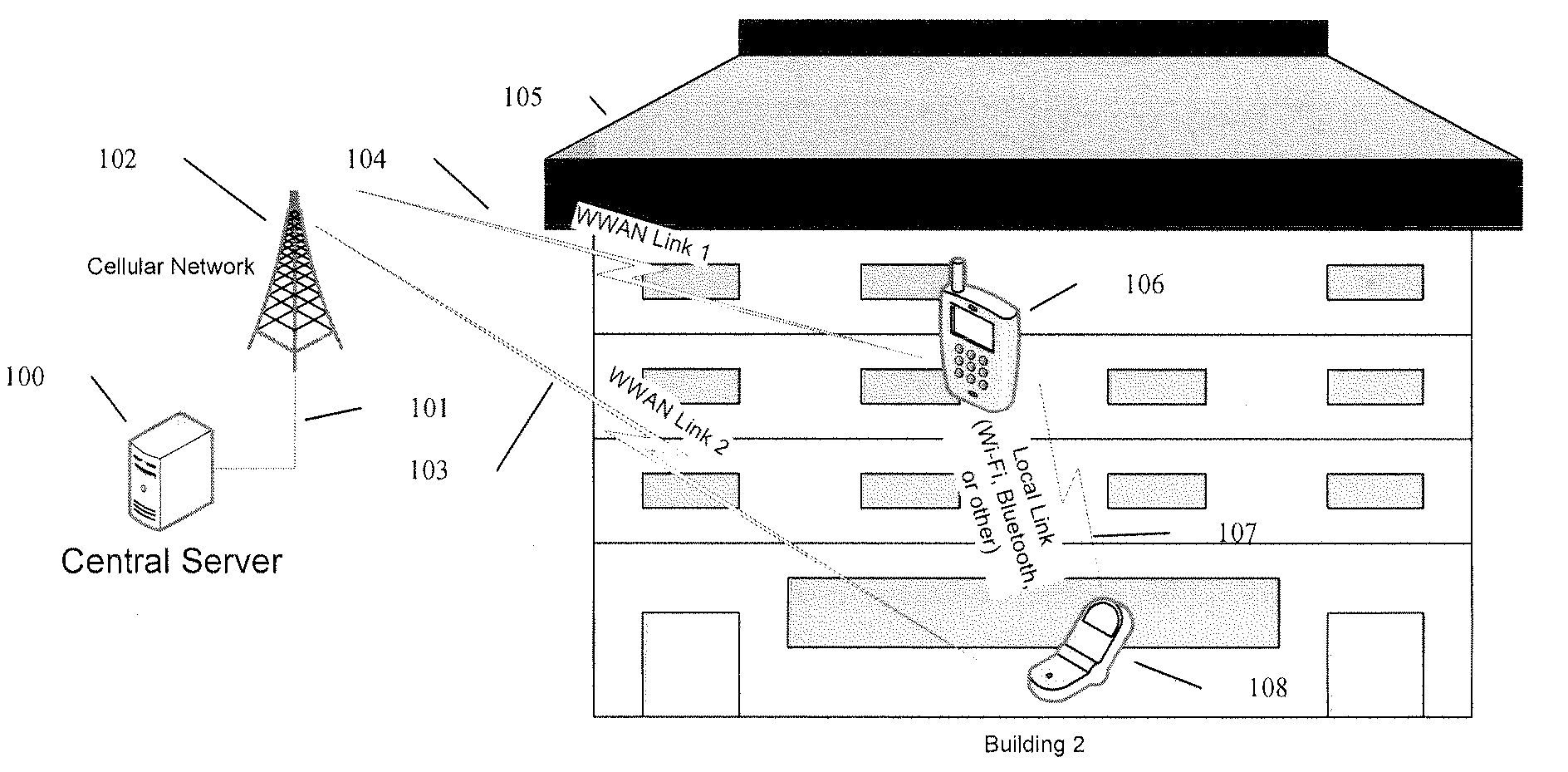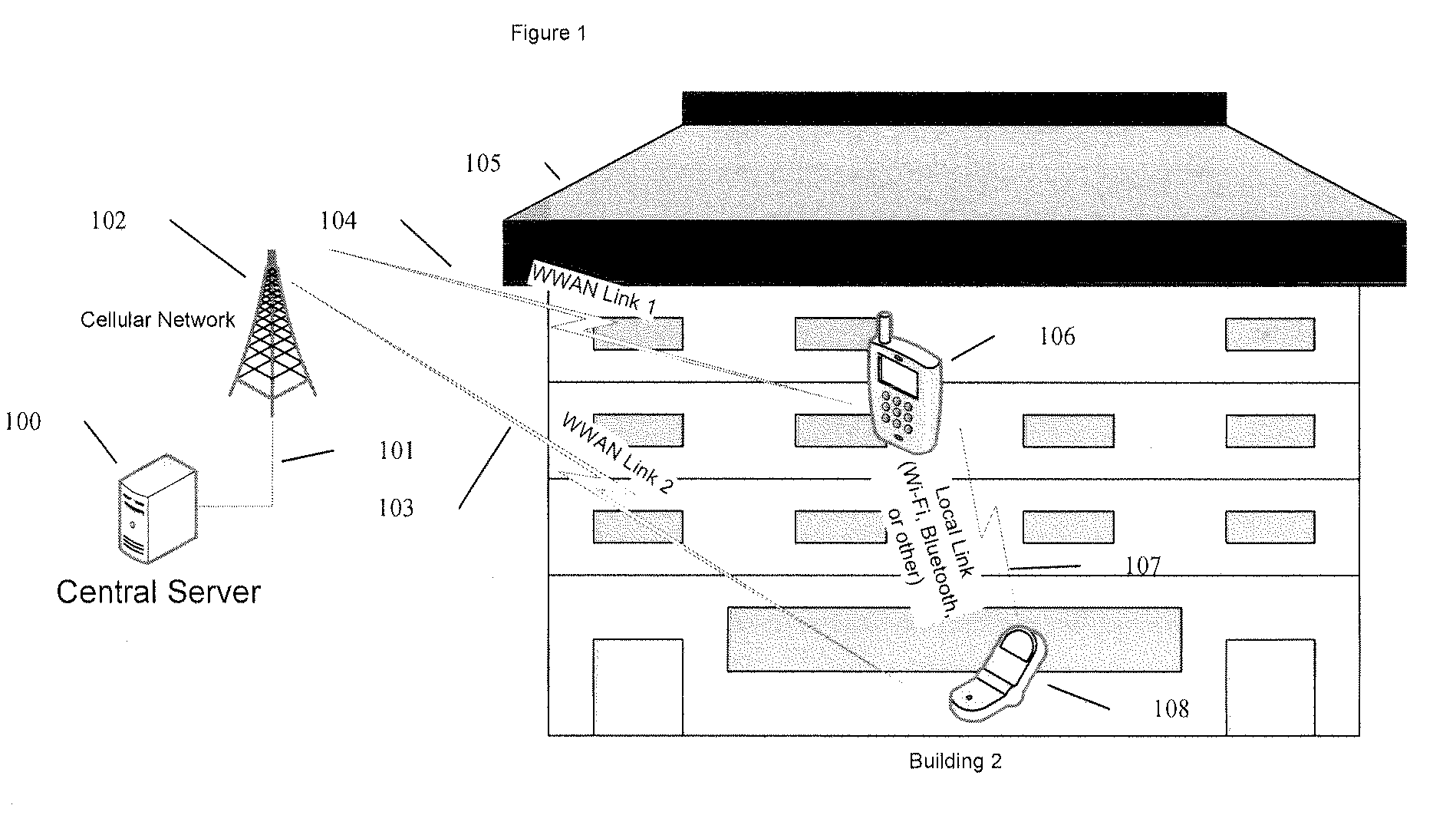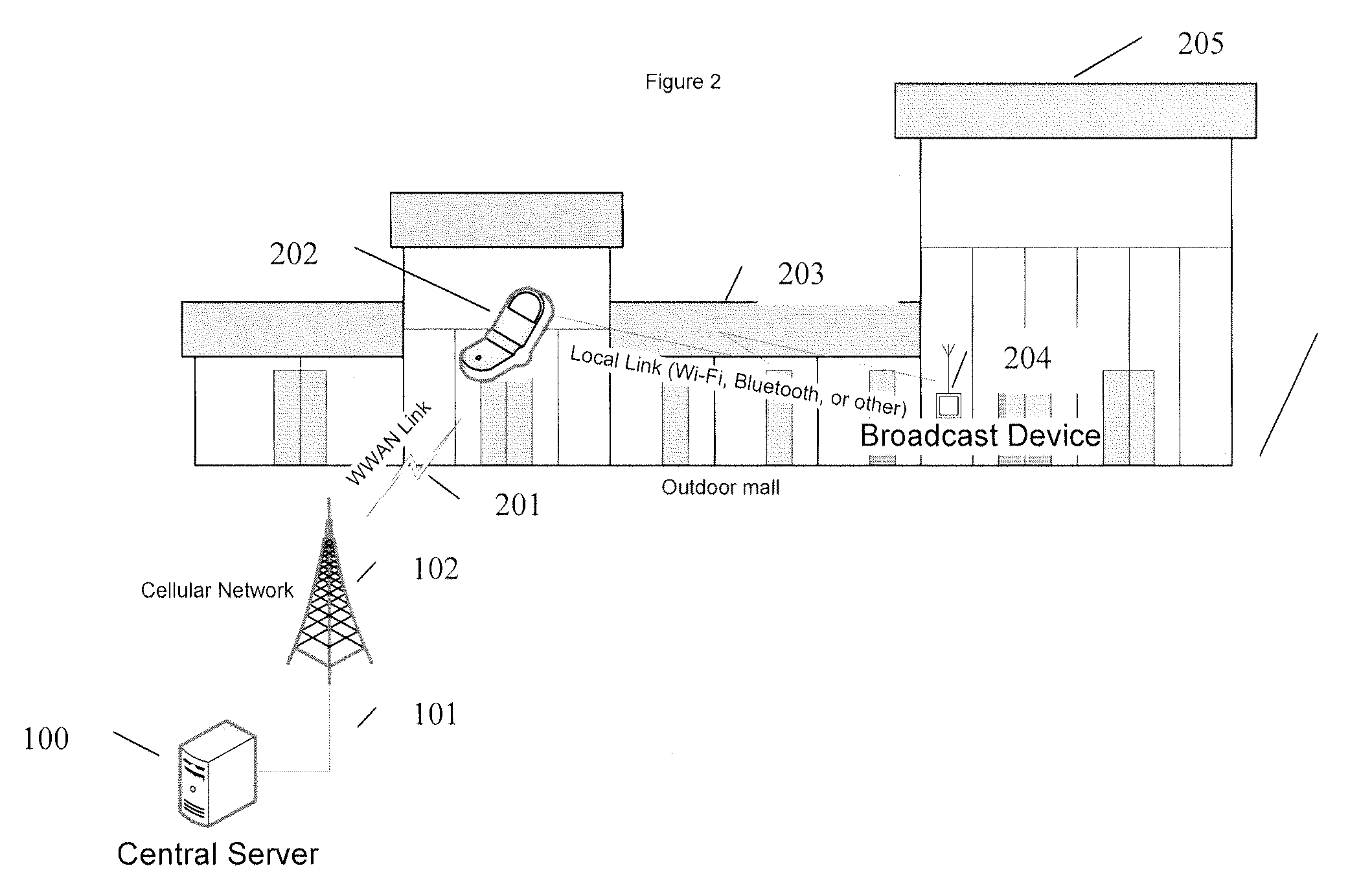Using a first wireless link to exchange identification information used to communicate over a second wireless link
a wireless link and identification information technology, applied in the field of using a first wireless link to exchange identification information used to communicate over a second wireless link, can solve the problems of inability to communicate with a peer, inability to receive sufficient signal strength of gps receiver in many indoor locations, and inability to meet the needs of individuals in close proximity to each other, so as to facilitate electronic transactions
- Summary
- Abstract
- Description
- Claims
- Application Information
AI Technical Summary
Benefits of technology
Problems solved by technology
Method used
Image
Examples
stadium example
[0083]Football Stadium Example
[0084]An embodiment of a transaction model, enabled by the infrastructure described above can be an event such as a concert, or sporting event (particularly when it is an indoor venue where no GPS is available). A number of the broadcast only devices are placed through out the seating areas. The devices are very short range, and only transmit intermittently and as a result may be battery powered and to remain active over a very long time period. Each device can be placed in a known location, in a predicable manner.
[0085]An attendee at the event has his or her device enabled with the identifier protocol and other embodiments described above. The device detects a broadcast device, and interacts over the internet with the server via the WWAN connection (as already described above). The server receives an indication of the broadcast device's identifier and the identifier of the account associated with the device which detected the broadcast device. The serv...
first embodiment
[0088]1. In a
[0089]One device is transmitting a wireless identifier using a wireless protocol capable of peer to peer communication;
[0090]The wireless identifier being associated with a specific account on a server connected to the internet;
[0091]A second device receiving the wireless identifier
[0092]The second device capable of communicating with the server over an internet connection;
[0093]The second device requesting information from the service associated with the first identifier[0094]The second device having a second identifier associated with a second account on the server; and / or[0095]The server providing different amounts of information related to the first account based on the parameters associated with one or both of the first and second accounts
[0096]The identifiers associated with the accounts being updated such that the identifiers would no longer be recognized as being associated with specific accounts without past or current interaction with the server;
[0097]Using on...
second embodiment
[0099]2. In a second embodiment,
[0100]A device is capable of operating two wireless protocols simultaneously, utilizing a first wireless protocol in the device to detect the proximity of another wireless device and using the second wireless protocol to communicate with a remote server, where:[0101]a. One or more of the devices are mobile devices;[0102]b. Where the first wireless protocol is a local, or personal area network wireless protocol such as 802.11, Bluetooth, UWB or other local connectivity protocol;[0103]c. Where the first wireless capability used for detecting the presence of another device, or advertising the presence or a device;[0104]d. Utilizing a wireless wide area data link from one or more of the wireless devices to, optionally:[0105]i. Connect to a central server;[0106]ii. Perform user authorization functions;[0107]iii. Perform download of information associated with account identifiers utilizing the short range wireless capability;[0108]iv. Request forwarding of ...
PUM
 Login to View More
Login to View More Abstract
Description
Claims
Application Information
 Login to View More
Login to View More - R&D
- Intellectual Property
- Life Sciences
- Materials
- Tech Scout
- Unparalleled Data Quality
- Higher Quality Content
- 60% Fewer Hallucinations
Browse by: Latest US Patents, China's latest patents, Technical Efficacy Thesaurus, Application Domain, Technology Topic, Popular Technical Reports.
© 2025 PatSnap. All rights reserved.Legal|Privacy policy|Modern Slavery Act Transparency Statement|Sitemap|About US| Contact US: help@patsnap.com



